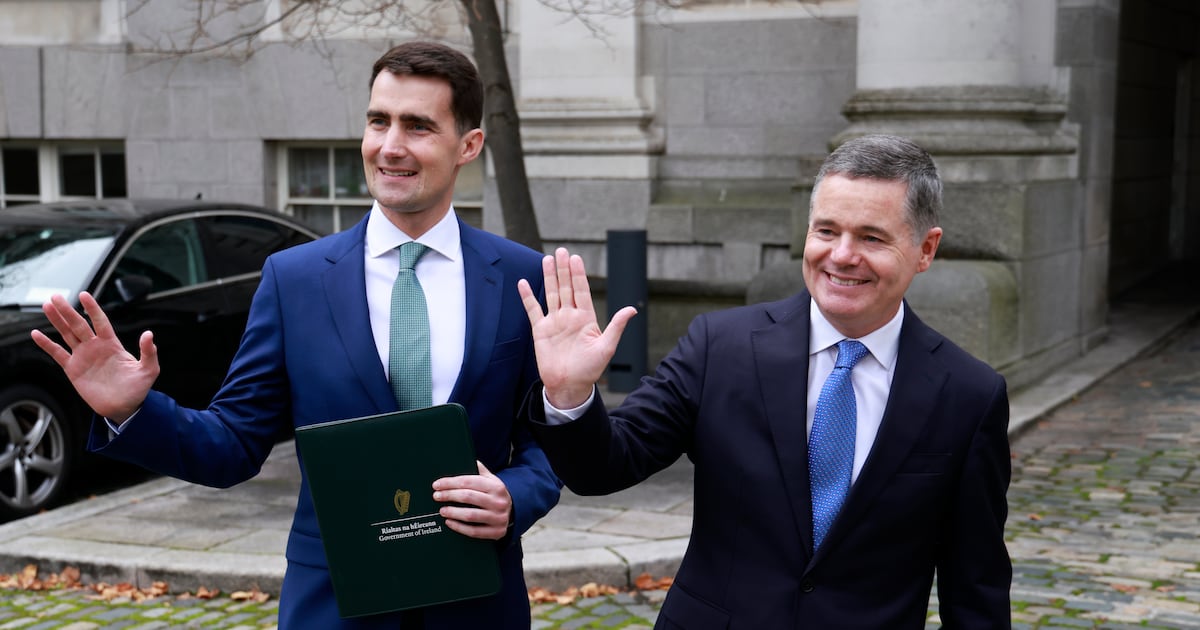Top Stories
Middle-Income Earners Left Behind as Public Spending Rises in 2026

Public spending in Ireland is set to increase sharply in the upcoming Budget 2026, leaving many middle-income earners feeling overlooked. The government’s latest fiscal strategy prioritizes significant investments in public services, but critics argue that the plan does not sufficiently address the financial pressures faced by this demographic.
The Budget, expected to be unveiled in April 2025, outlines various initiatives aimed at enhancing healthcare, education, and infrastructure. However, while these enhancements are crucial, the rising expenditures may not translate into immediate financial relief for middle-income households. A report by the Irish Times highlights concerns that the government’s focus on public services could neglect the need for tax relief or wage growth for this income group.
Implications for Middle-Income Households
As public spending is set to rise by an estimated €3 billion, many middle-income earners are questioning how this increase will impact their disposable income. The government’s revenue projections indicate a stronger economy; however, if taxation policies do not evolve alongside rising living costs, these households might struggle to keep pace.
Critics of the government’s approach emphasize that without targeted tax benefits or support mechanisms, middle-income earners could find themselves in a precarious situation. In particular, public sector wage increases are anticipated, but the ripple effects on the private sector remain uncertain. This could exacerbate existing disparities in income growth across different job sectors.
Government Response and Future Outlook
Officials from the Government of Ireland defend the budgetary priorities, stating that enhancing public services is essential for long-term economic stability. These investments are designed to create a more robust social safety net, which ultimately benefits all citizens, including the middle class. However, the challenge lies in balancing these priorities with the immediate financial realities faced by many families.
As the budget discussions unfold, stakeholders are urging the government to consider innovative solutions that can ease the burden on middle-income earners. This could include revisiting taxation frameworks or introducing direct financial support measures. The outcome of these deliberations will be closely monitored by both economists and the public, as they will significantly influence the economic landscape in the coming years.
In summary, while Budget 2026 promises substantial improvements in public services, the challenge remains to ensure that middle-income earners are not left behind. The government’s next steps will be crucial in determining how effectively it addresses the needs of this vital segment of the population.
-

 Top Stories4 weeks ago
Top Stories4 weeks agoTributes Surge for 9-Year-Old Leon Briody After Cancer Battle
-

 Entertainment2 months ago
Entertainment2 months agoAimee Osbourne Joins Family for Emotional Tribute to Ozzy
-

 Politics2 months ago
Politics2 months agoDanny Healy-Rae Considers Complaint After Altercation with Garda
-

 Top Stories2 months ago
Top Stories2 months agoIreland Enjoys Summer Heat as Hurricane Erin Approaches Atlantic
-

 World3 months ago
World3 months agoHawaii Commemorates 80 Years Since Hiroshima Bombing with Ceremony
-

 Top Stories3 months ago
Top Stories3 months agoFianna Fáil TDs Urgently Consider Maire Geoghegan-Quinn for Presidency
-

 World3 months ago
World3 months agoGaza Aid Distribution Tragedy: 20 Killed Amid Ongoing Violence
-

 World3 months ago
World3 months agoCouple Convicted of Murdering Two-Year-Old Grandson in Wales
-

 Top Stories4 weeks ago
Top Stories4 weeks agoNewcastle West Woman Patricia Foley Found Safe After Urgent Search
-

 Top Stories2 months ago
Top Stories2 months agoClimbing Errigal: A Must-Do Summer Adventure in Donegal
-

 Top Stories2 months ago
Top Stories2 months agoHike Donegal’s Errigal Mountain NOW for Unforgettable Summer Views
-

 World3 months ago
World3 months agoAristocrat Constance Marten and Partner Convicted of Infant Murder









